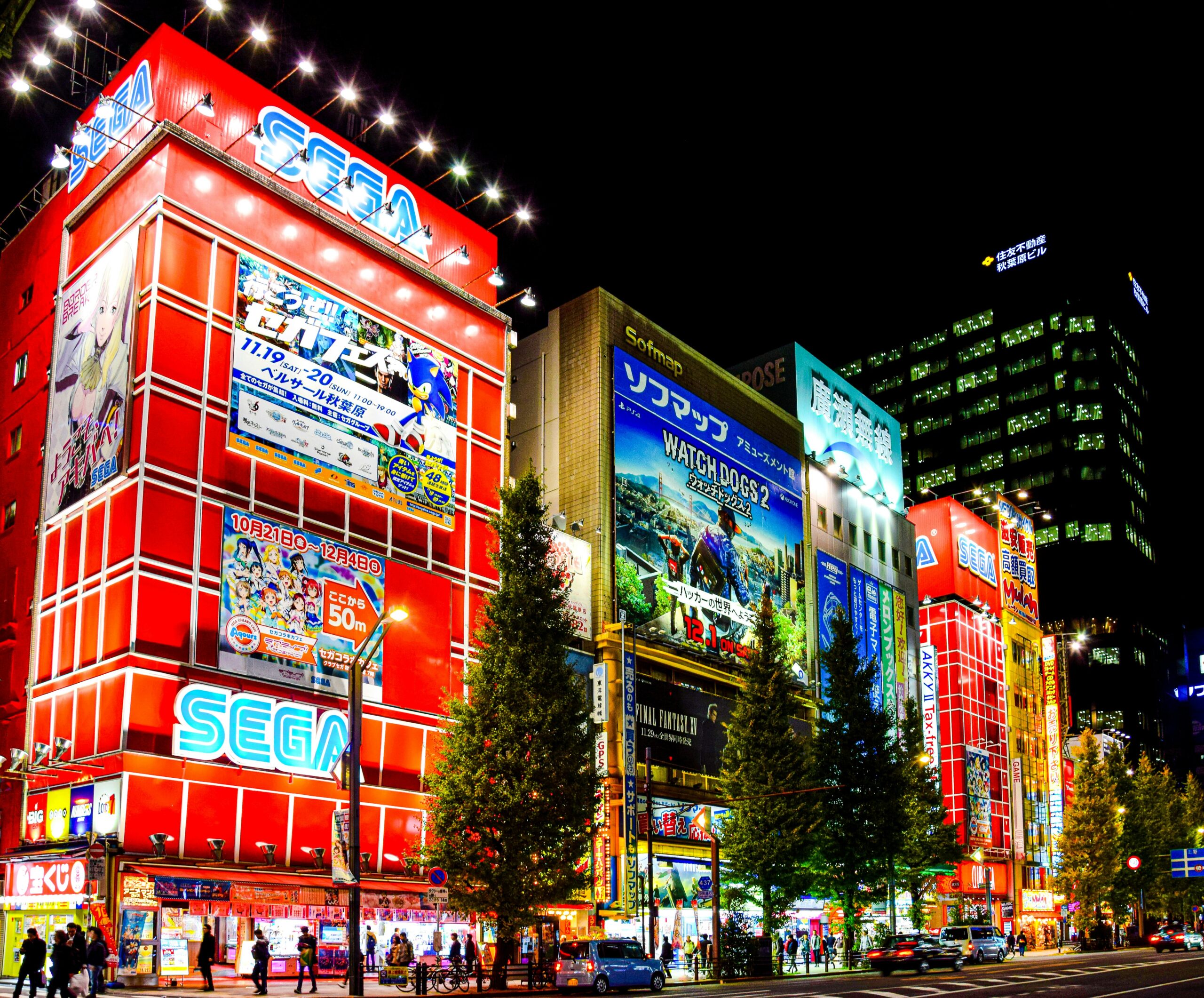On the eastern side of Tokyo, nestled in the Chiyoda ward, lies Akihabara—a district locals affectionately call “Akiba.” The nickname itself carries a certain warmth, an intimacy that goes beyond the city map.
My visit to this neighborhood wasn’t planned. It all began with something quite ordinary.
One spring afternoon during a business trip to Tokyo, a meeting I had scheduled was abruptly canceled. Suddenly, I had a free afternoon. Sitting in the hotel lobby, searching for somewhere to go, a phrase I’d once heard echoed in my mind.
“Why not visit Akihabara? It’s where you can experience Japan’s chaos—in the best possible way.”
The advice had come from a Japanese designer I met in New York. I hadn’t thought much of it at the time. But now, with hours to spare and curiosity nudging me forward, I hopped on the Yamanote Line.
The moment I stepped through the ticket gate, I was breathless.
Skyscrapers loomed over the station, flanked by tightly packed anime shops, electronics stores, maid café signs—and through it all, a spring breeze threaded its way between buildings, carrying with it stray sakura petals that danced in midair.
This was Tokyo. But not the Tokyo I’d seen anywhere else.
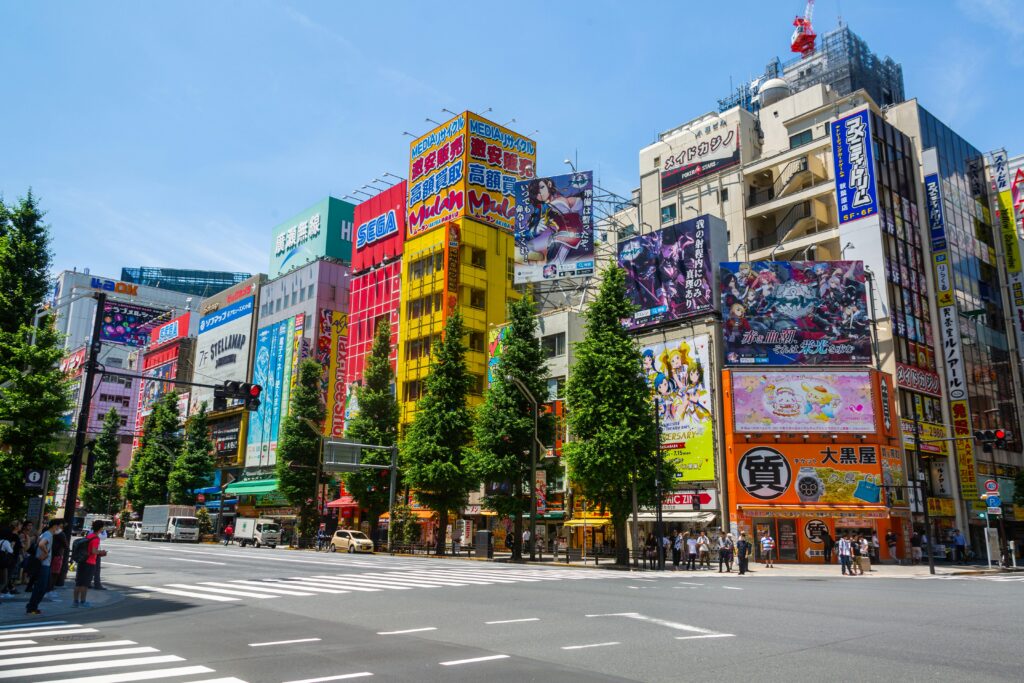
Just a few minutes’ walk from the station, I turned down a narrow alleyway and the atmosphere shifted completely. Among old, weathered buildings from Japan’s Showa era, I found a small electronics store. I pushed open the door. Inside, shelves were packed from floor to ceiling with tiny components.
Behind the counter stood a young man who looked about my age. He wore black-rimmed glasses, a white lab coat, and bore the faint scars of solder burns on his fingers.
“First time here?” he asked in friendly Japanese.
I introduced myself briefly. To my surprise, he replied in a mix of Japanese and English. His name was Yuto. Since childhood, he had loved radios and electronic devices. Now, he worked at this shop while developing his own custom-made audio gear.

“There’s something about this place,” he said. “It’s like the heat of machines and the heat of people are all mixed together.”
There was a quiet pride in his eyes. Akihabara wasn’t just a tourist attraction. It was a living, breathing city fueled by the quiet yet powerful energy of people devoted to making things.
For lunch, Yuto took me to his favorite ramen spot. By the time we arrived, a line of more than ten people had already formed in front of the shop. Amid the buzz of the Electric Town—the sounds of game arcades, snippets of anime songs, chatter from passersby—this line alone stood in calm, patient stillness. I decided to wait.
We stepped through a wooden sliding door into a small space with only a counter and thick clouds of steam. The chef was silent, preparing each bowl with careful attention. I ordered Tokyo-style shoyu ramen. The broth was clear and deeply flavorful. The slices of pork fell apart gently, and the thin noodles had just the right firmness. Even the soft-boiled egg, perched beside the bowl, was perfectly done. I couldn’t help but smile. It felt like a moment of stillness within the city’s chaos.

In the afternoon, I walked to Kanda Myojin Shrine, a short distance away. Suddenly, amid the concrete and steel of the city, a vivid vermilion gate rose before me. Passing through, I stepped into stillness. The spring sunlight glinted off the stone paths, casting soft light on the old temple roofs.
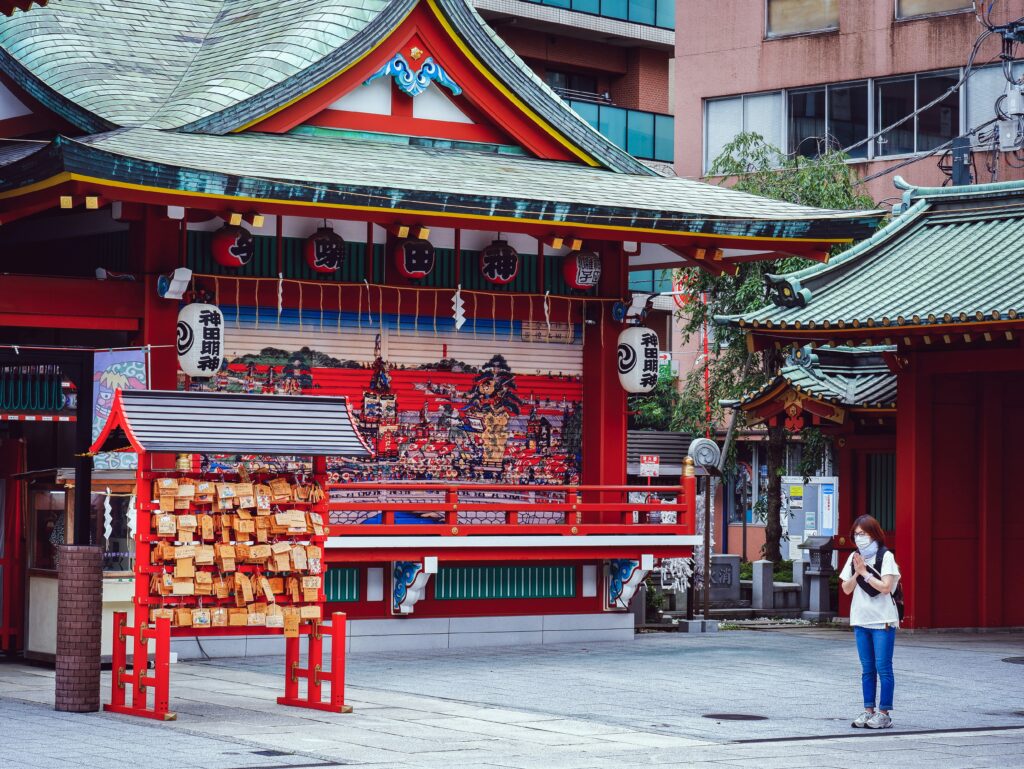
Known as one of Tokyo’s guardian shrines, Kanda Myojin is a popular spot for people working in IT and the anime industry. Even the lucky charms here felt contemporary—some designed specifically for the safety of electronic devices.
That evening, before heading back to the hotel, I took a detour to Asakusa. Just fifteen minutes from Akihabara by train, Asakusa carries a nostalgic charm within its bustling streets. Walking through the giant red lantern of Kaminarimon Gate and along Nakamise Street, I was enveloped in the sweet aroma of traditional snacks.

I stopped to buy a ningyo-yaki—a small sponge cake filled with sweet red bean paste. Freshly baked, it was unbelievably soft and subtly fragrant. Biting into it under the night breeze, I felt a gentle happiness wash over me.
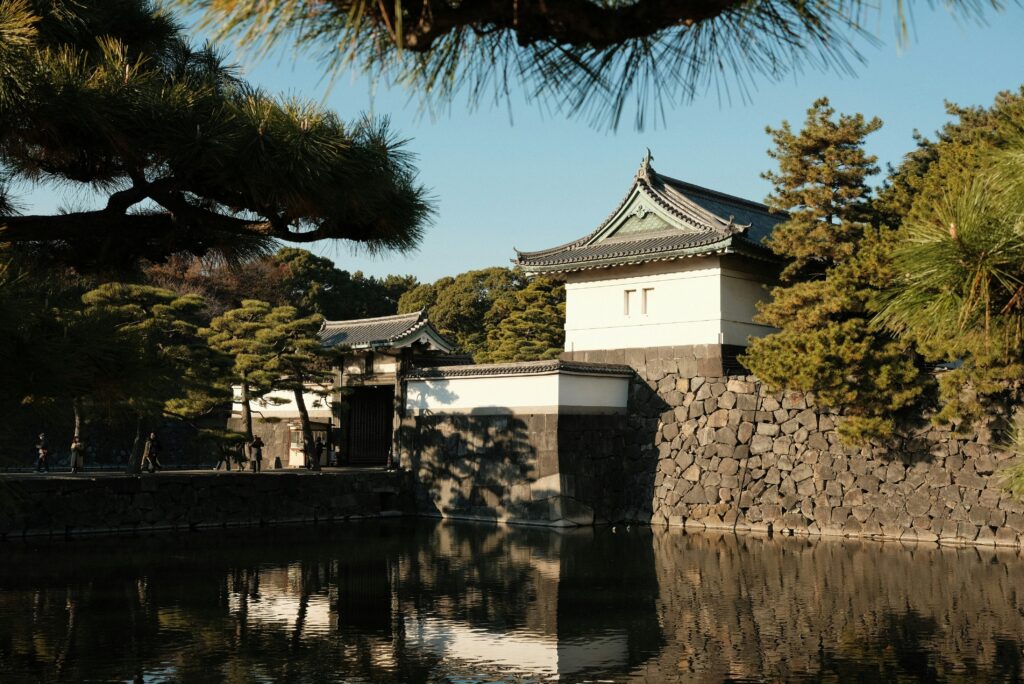
The next day, I visited the East Gardens of the Imperial Palace, near Tokyo Station. Walking between the vast lawns and historic stone walls, I felt time folding over itself—the modern clamor of the city blending quietly with the lingering echoes of samurai days. Spring flowers had begun to bloom, their rustling in the breeze a soft, soothing sound.
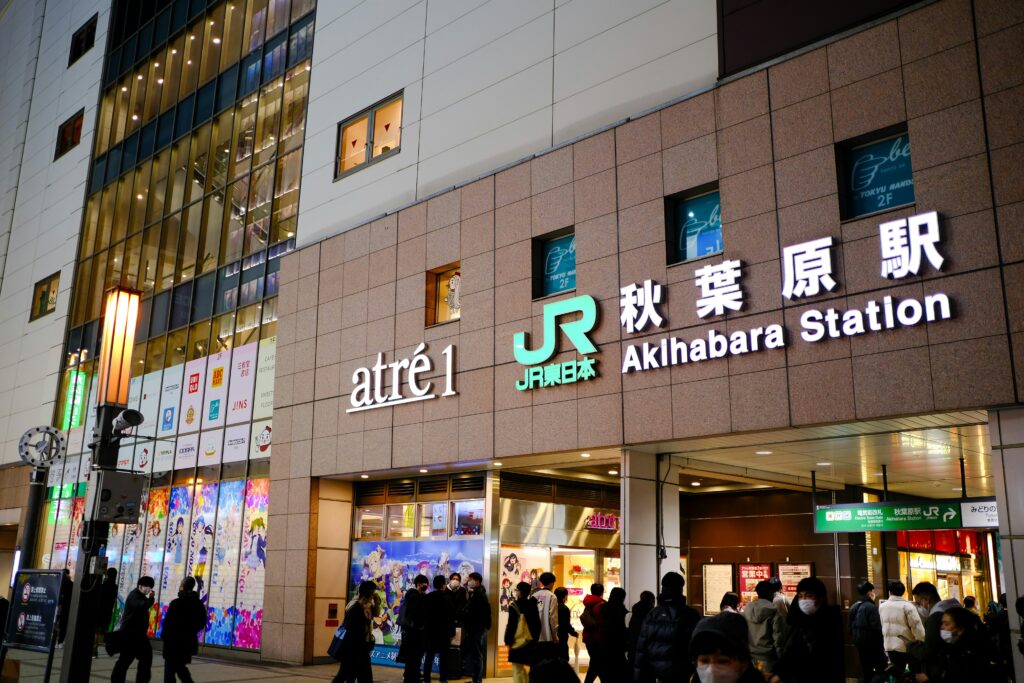
On the final day of my trip, I returned once more to Akihabara Station. Watching people flow past me—foreign tourists, salarymen in suits, young cosplayers dressed as anime characters—I was struck by how this city seemed to gather people from every walk of life, letting their paths momentarily cross.
Yuto’s words came back to me again:
“It’s like the heat of machines and the heat of people are all mixed together.”
Yes, Akihabara is a city of technology. But more than that, it is a city of people—people who believe in their passions and build lives around them.
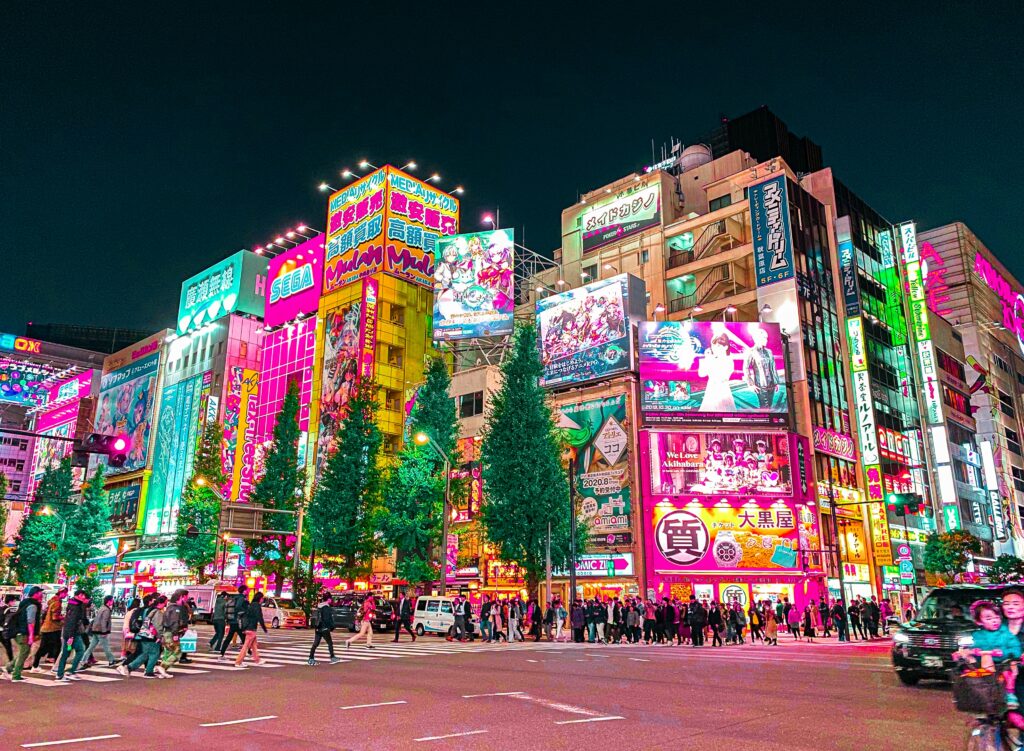
In Akihabara, you’ll find a tiny shop selling old electronic parts right next to a showroom for cutting-edge robot arms and drone components. Beneath neon signs, there are cafés that still carry the scent of the Showa era. Just steps away, in a basement, you might discover a brand-new maid café. Here, people embrace both the past and the future. Akihabara is a city where passion transcends time.
On this trip, I witnessed for the first time a place in Japan where the past and the future coexist. That unplanned afternoon didn’t lead me to a tourist attraction—it led me to something far more valuable.
Something that routine never shows you.
New perspectives and quiet moments of wonder, revealed only through unexpected encounters and the serendipity of going off-course.
Something New Travel

